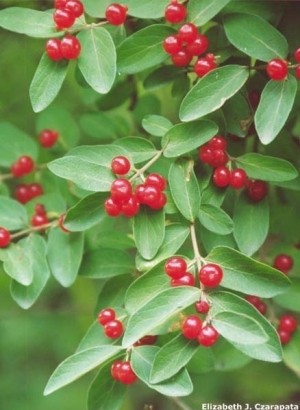
Editor’s Note: This week’s blog features the musings of founding editor Ginny Barlow.
I was on a lovely walk with Chris last fall, just meandering around on a sunny day, crisp leaves, crisp air, two happy dogs. A mile or so from home I noticed a big non-native honeysuckle bush. They are blessedly rare around here, and when I saw that alien thug, I hit the ceiling and furiously addressed it in the most unflattering way. Chris was silent until I ended my rant. Then he said, “I am SO glad that I don’t know how to tell native plants from non-native plants.”
That’s when it sunk in that my war against non-natives had gotten the better of me. There were plenty of other warning signs that I had ignored. A couple weeks before I had complained, in not the friendliest way, to my really nice neighbor about the buckthorn on her land. All my walks, really, had devolved into a concentrated search for enemies among the vegetation. Plants were not to be trusted. Every outing had become a mission.
I’ve noticed that it’s not just me who gets unnecessarily riled up about invasive species. Other people who are normally perfectly civil also get testy on this subject. Even in my battle-hardened days, it bothered me when 84-year-old landowners were being unduly pressured by their forester to go after all the non-native species on each of their 200 acres. And warning labels (complete with skull and crossbones) should be pinned on a lot of people when they discuss herbicides: They’re 100 percent essential and biodegrade before you know it. They’re horribly toxic. There’s no in between.
The good news is that after my wake-up outing with Chris last fall, I very easily succeeded changing my relationship with non-native honeysuckles or buckthorns. I now remain calm and at peace in their presence. I still pull buckthorns up when I feel like it and hang them with their frizzy roots upwards in tree branches – as a lesson to other buckthorns. In the winter I carry flagging and decorate plants I plan to come back to and deal with in the summer. But I don’t hate them or blame them. It’s such an improvement. I’m no less effective at eradication and so much happier. If you are like I was, see if you can back off. Your woodland walks will be much the better for it.


Discussion *